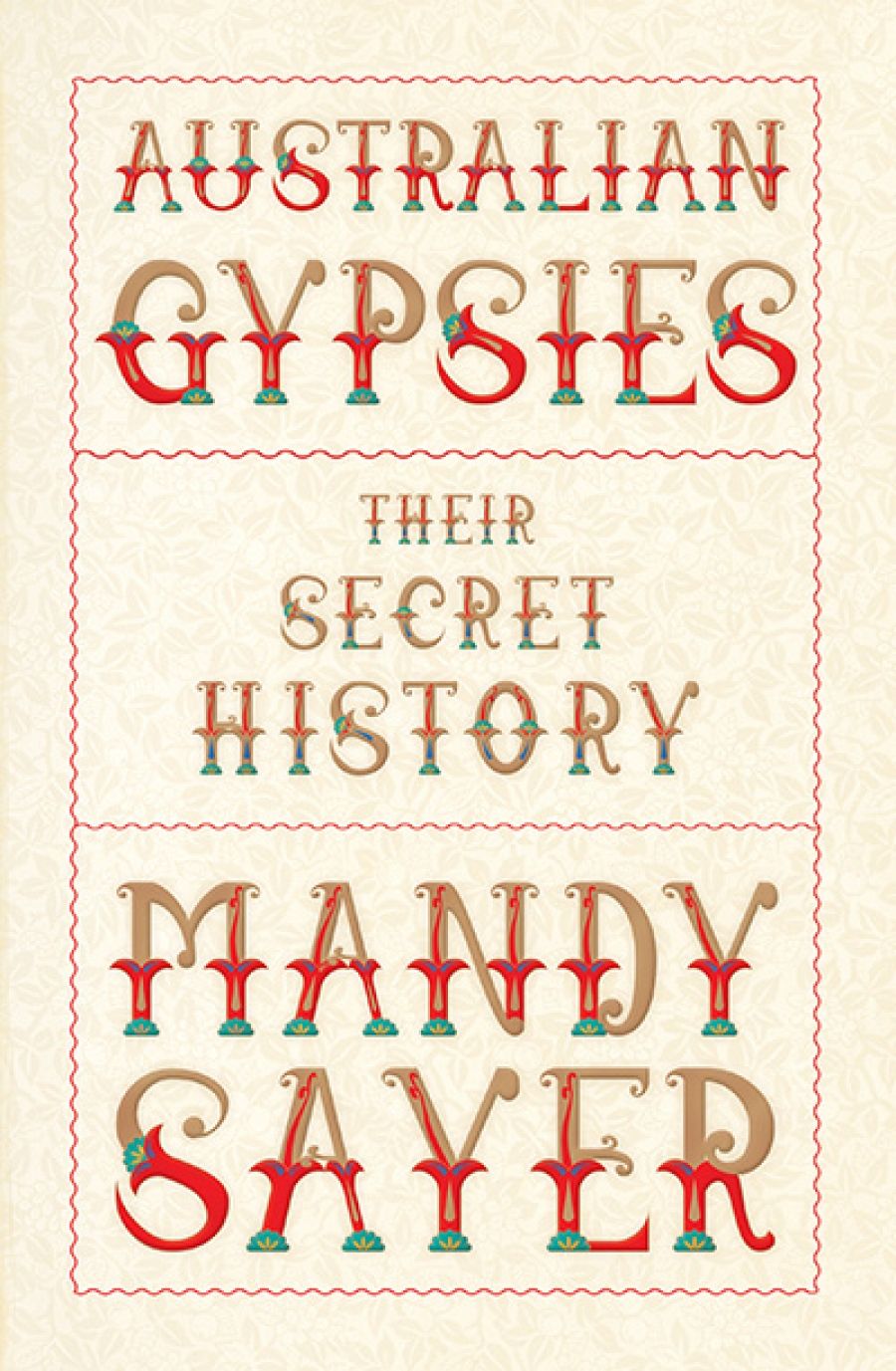
- Free Article: No
- Contents Category: Australian History
- Custom Article Title: Michael Winkler reviews 'Australian Gypsies: Their secret history' by Mandy Sayer
- Custom Highlight Text:
In the Australia of my childhood, the Gypsy skirt was fashionable, ABC Radio played Django Reinhardt, ‘The Gypsy Rover’ was in school songbooks, peripatetic players were called ‘Gypsy footballers’, the Gypsy Jokers were a feared bikie gang, and nefarious Gypsies were stock villains in children’s books. Gypsies – or Roma – occupied cultural terrain, but ...
- Book 1 Title: Australian Gypsies
- Book 1 Subtitle: Their secret history
- Book 1 Biblio: NewSouth, $34.99 pb, 320 pp, 9781742234670
Sayer details important parallels between Roma and Indigenous Australians: ‘being driven away from their traditional lands; forced removal of their children; loss of language and identity; and policies drafted to discriminate against them specifically.’ This seems a fertile area for exploration, but frustration ensues. According to Sayer, ‘indigenous Australians originated in southern India’, a highly contestable statement that presumably stems from misreading (or overstating) research by German anthropologist Irina Pugach. The assertion that ‘There is some evidence that these early travellers, like the Gypsies, had been banished from their homeland [India] either through warfare or as a form of punishment’ is presented without the purported evidence and should have been challenged by an editor, along with the suggestion that all Aboriginal peoples were nomadic.
Sayer portrays freed convict Henry Lovell’s fathering a child with an Aboriginal woman as ‘extending the already-close ties between the Roma and Aboriginal people’, a yawning overstatement. When Lovell takes the woman and child to England, Sayer muses that, ‘The fact that Lovell’s partner agreed to leave her clan, her language and her land forever might seem surprising’, completely ignoring the power imbalance, with the unnamed individual – Sayer calls her, unhappily, an ‘illiterate black woman’ – probably having no say in the matter.
The book is full of airy pronouncements that invite challenge. Henry Lawson ‘began practising the oral storytelling traditions of his Gypsy ancestors ... and unwittingly forged Australia’s first literary form: the bush yarn, or tall tale’. Unwittingly? And was this our first literary form? What of colonial journals published locally and in Britain, let alone millennia of Aboriginal song?
 Gypsy woman and two young children, Annerley, Brisbane, 1907 (State Library of Queensland via Flickr)
Gypsy woman and two young children, Annerley, Brisbane, 1907 (State Library of Queensland via Flickr)
She claims that when police in the late 1800s ordered Roma to move on ‘they always did, without complaint’. Olga Sterio’s accusation in 1926 that Rose Flores flirted with her brother-in-law was ‘an allegation that was no doubt false’. How can Sayer know these things with the remotest certainty? She posits that, ‘Even in the 21st century, the Roma remain as the ultimate “other” in Western society.’ This assertion of supreme alterity may surprise members of other othered ethnic and religious groups.
There are non sequiturs, repetitions, loose language, and infelicitous word choices. Straightforward historical chapters are interleaved with third-person accounts of Sayer meeting local Roma. The men are almost invariably ‘handsome’, and she is at pains to emphasise their generosity. This over-eagerness to redress discrimination against Gypsies leads to Sayer’s praising them for stealing less money than they might have done; suggesting that non-Roma would not provide extended-family care for children of a dead mother; and arguing that excluding Roma adults from enrolling in a primary school was due to their ethnicity, not their age.
A stricter editor may have argued that including a bizarre story about the author defecating in the yard of a Roma woman, wiping herself with a sheet of A4 paper and getting a paper-cut ‘on my sphincter’, is a tonal shocker. Ditto the story about appearing bottomless before a Roma man, which concludes with Sayer being informed she has a ‘great arse’.
Sayer has demonstrated before her adeptness at using close-to-the-knuckle anecdotes to advantage. Consider the indelible recollection in Dreamtime Alice (1998) of being nine years old and touching herself as she lies in bed listening to her parents have sex. This is a different book, however, and these moments are in the wrong register. Australian Roma could not have a stouter defender, but this effort serves their interests more than those of the reader.


Comments powered by CComment